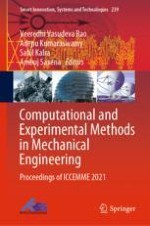This book includes selected peer-reviewed papers presented at third International Conference on Computational and Experimental Methods in Mechanical Engineering held in June 2021 at G.L. Bajaj Institute of Technology and Management, Greater Noida, U.P, India. The book covers broad range of topics in latest research including hydropower, heat transfer, fluid mechanics, advanced manufacturing, recycling and waste disposal, solar energy, thermal power plants, refrigeration and air conditioning, robotics, automation and mechatronics, and advanced designs. The authors are experienced and experts in their field, and all papers are reviewed by expert reviewers in respective field. The book is useful for industry peoples, faculties, and research scholars.
